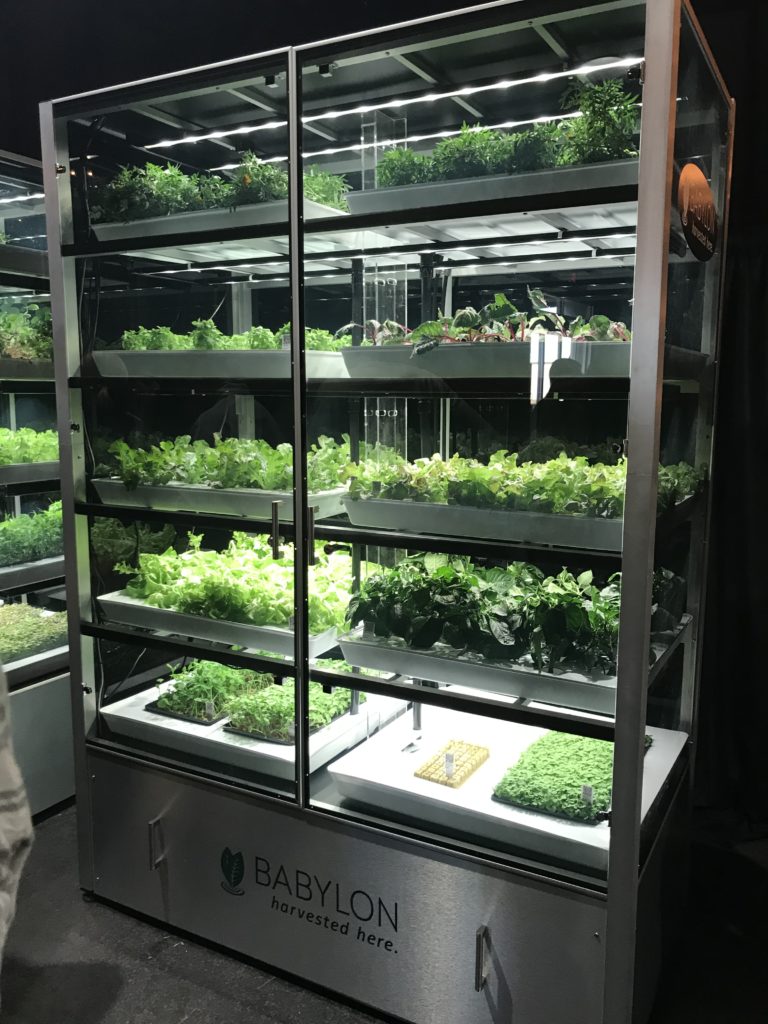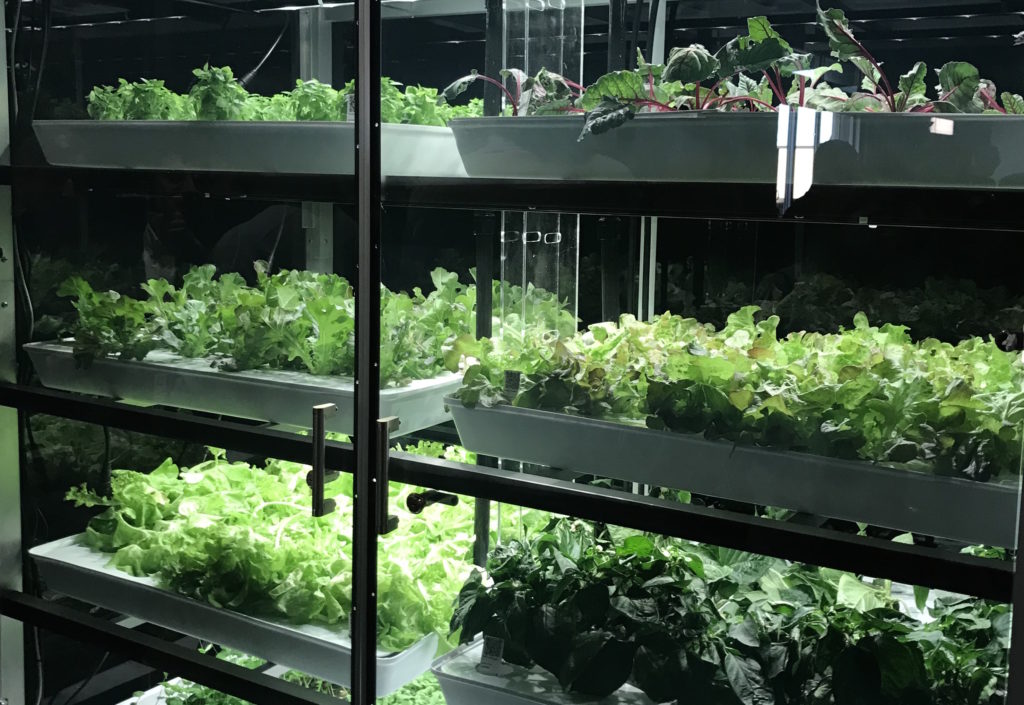Senior housing providers are embracing an ever-growing list of unique dining services and amenities in order to attract tomorrow’s residents and save on operating costs — including indoor hydroponic microfarms and offsite “cloud kitchens.”
Two companies leading the way in this regard are Charlottesville, Virginia-based Commonwealth Senior Living, and Priya Living, a senior housing company headquartered in the San Francisco Bay Area. Both companies are shaking up their dining services to include more trends that have gained traction in the consumer-facing restaurant industry.
The practice of adapting consumer dining trends for the senior living world is not new, as evidenced by the growing number of new senior living communities opening with full-service bars, fast casual eateries and bistros. Fleet Landing, a continuing care retirement community (CCRC) in Atlantic Beach, Florida, even has its own food truck.
All of this comes as senior living providers search for the right mix of services and amenities to woo millions of baby boomers due to reach retirement age in the next decade, while tightening up their operations in a competitive and costly environment.
Hydroponic hopes
At Commonwealth Senior Living, residents are chowing down on fresh leafy greens grown in-house — literally.
The provider recently partnered with Charlottesville, Virginia-based Babylon Micro-Farms to build indoor microfarms with the capacity to grow up to 5,800 plants a year and 45 different leafy lettuces, edible flowers and herbs. Timed LED lights and formulated nutrients nourish the plants, while 45-gallon reservoirs supply the water they need. The setup requires no soil, pesticides or other additives.

Through an app, Babylon guides Commonwealth’s dining service directors and associates through seeding, planting, harvesting, cleaning and everything between. A growing cycle can last anywhere between 15 and 45 days, depending on the plant, and workers spend just 1 hour and 20 minutes maintaining the setup in that time.
The first such microfarm opened at Commonwealth Senior Living at Charlottesville in the third quarter of this year, and the company has plans to expand the service to all of its 34 communities early in 2020 at a rate of about three communities per week.
Commonwealth at Charlottesville’s residents and their loved ones first sampled fresh garden salads harvested from the indoor farm in mid-November. In addition to salads, Commonwealth’s chefs also use the produce in wraps and sandwiches, as garnishes and to flavor dishes.
The popularity of the fresh greens has only grown since Commonwealth’s first harvest, according to Bob Raymond, the provider’s vice president of procurement and dining services.
“We can’t keep up on the production,” Raymond told Senior Housing News. “The residents are eating everything we’re cutting and harvesting.”
And residents aren’t just eating their vegetables, they’re helping grow them, too. Already, some have pitched in to aid with the growing process — including a former “master gardener,” Raymond said. Looking ahead, Commonwealth hopes to include the hydroponic gardens in its programming, such as by letting residents pick out what they want to grow.
“We will be engaging the resident for the selection of product,” Raymond said. “So, if a resident wants to grow a specific type of butter lettuce … that will be that resident’s row of lettuce.”
Because the vegetables are grown in-house, they don’t need to be shipped from elsewhere. And Commonwealth has been able to trim the money it spends on fresh lettuce and produce, which can lie anywhere between $750 to $1500 a month for a typical community.
“Based on the overall cost of what we we’re purchasing from farms or from mainline vendors, this has reduced our cost probably by about 10% to 15%,” Raymond said. “And, we’ve eliminated a 50- to 60-mile round trip [for deliveries] 52 times a year.”
In the end, adopting the hydroponic setup is aimed at attracting tomorrow’s senior living residents, who will bring with them a slew of new preferences and desires.
“Our resident population will be changing, and it is changing today,” Raymond said. “And what works today may not work tomorrow, so you have to continually look at different opportunities.”
A kitchen in the cloud
For many senior living providers, dining is a cost center, meaning more money goes into culinary budgets than comes out. For larger providers with more comprehensive programs and services, this is often mitigated elsewhere. But smaller providers — especially those that lie on the active adult or “independent living light” side of things — finding the right balance of providing some dining services while also keeping costs low is tricky.
That’s partly why senior housing provider Priya Living uses Shef, an offsite “cloud kitchen” service that makes and delivers food to residents on demand. The provider uses Shef in place of a more traditional commercial kitchen or onsite senior living dining program. Priya’s portfolio includes three open communities, and its focus on Indian culture and customs have made it a provider of choice for this affinity group — although the communities are open to anyone and have even welcomed residents of all ages.
“The cost of running a food service operation is substantial,” Priya Living Founder Arun Paul told SHN. “It’s a cost center. Everyone across the board, I would guess, is losing money on food.”
Shef delivers refrigerated, prepackaged meals such as shahi paneer, butter chicken, oxtail stew and pork dumplings to residents three times a week. While residents pay for the service, each meal costs just $8 to $10 thanks in part to a discount Priya Living has with Shef, Paul said.
Cloud kitchens — also referred to as “ghost kitchens” or “dark kitchens” — are restaurants that lack a dining room and don’t have a physical storefront. The food is cooked in the kitchen and then delivered to or catered at other sites. While the cloud kitchen trend is still budding, it is on the rise with help from the likes of major fast food restaurants and former Uber CEO Travis Kalanick.
Using Shef and other unbundled services has helped Priya Living keep its rates relatively low. The provider’s communities in Fremont and Santa Clara, California, have monthly rates for residents between $2,500 and 3,000, before you add in any other services.
“When you take out food, your base cost for the resident is substantially lower,” Paul said. “In the mind of our residents, we’re viewed as a very affordable option.”
In addition to cost savings, Shef also offers variety and flexibility, he added. And while there are some residents who order most of their meals through Shef, it’s more commonly used by residents who also cook and dine out during the week.
“No matter how good your kitchen is, folks are going to get bored,” he said. “So, what’s great about working with the cloud kitchen is that it gives residents more flexibility over what they’re eating.”
Looking ahead, Paul expects more senior living providers — particularly those in urban markets — to explore using cloud kitchens to supplement or even replace their in-house dining programs.
“I think there’s still going to be a place for in-house food preparation, but I think it will be in much more limited circumstances than it is today,” Paul said. “Unbundling services is critical to addressing affordability and the middle market, and now we have the tools to do it that we didn’t have even a few years ago.”
Companies featured in this article:
Babylon Micro-Farms, Commonwealth Senior Living, Priya Living, Shef


